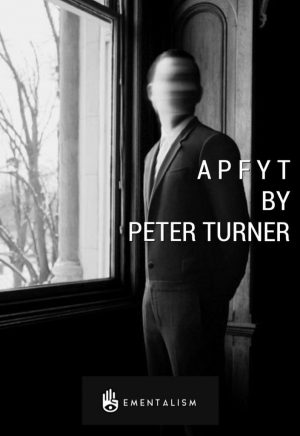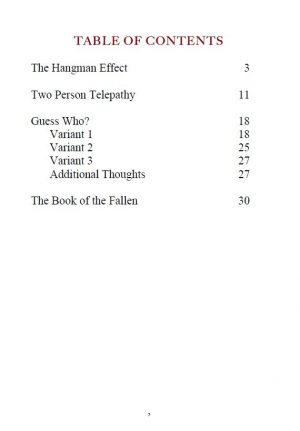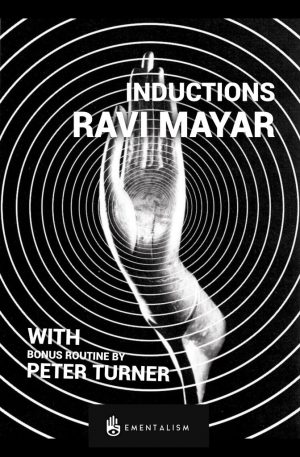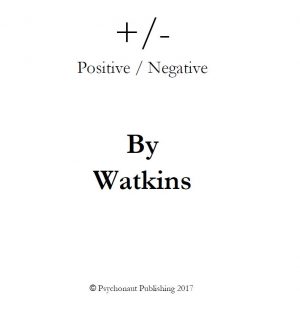Ian Rowland – Lecture Notes 2018 Mindvention (official PDF)
$11.99
Description
These are the Lecture Notes I created for when I lectured and performed at ‘Mindvention’ in Las Vegas in 2018.
Please read the Contents list carefully. I have published some of these items previously.
– – –
Mind Sniffing
One of the openers I use most often!
It has a nice visual focus, an intriguing and humorous premise, a good ‘gag’ moment involving a false ending and a very satisfying mystery at the end. It’s also one of those routines that can involve everyone in the audience (although everyone stays in their seats… no-one needs to join you on stage).
The routine is similar in structure and method to my ‘3-21’ routine which I have published elsewhere.
So what actually happens? Well, it’s essentially a prediction item. You have made a prediction. You invite everyone to just think of a number (nothing written down). Your prediction will only come true if you can somehow deduce, just by looking at people, who is thinking of the precise number you are searching for. You explore the facial expressions of your audience, trying to gauge their thoughts, and eventually choose one person. They turn out to have been thinking of precisely the number you predicted!
This works every time! Unusually for this kind of effect, the people in your audience really do only need to think of a number. There’s no other process involved, nothing written down, no pre-show. Yet you are always correct!
– – –
Card Warp Script
A new script for a magical classic!
Card Warp is a classic close-up effect with two cards. I do not explain the effect or the method, as these are not mine to give away.
All I am providing here is my script and presentation.
This is the piece of close-up magic/mentalism that I perform most often. I always have it with me, ready to perform. When I performed this at Mindvention I won one of the loudest and most sustained rounds of applause I’ve ever received. Why? Because it’s a very useful and practical example of the ‘magic as metaphor’ theme that transforms ‘a card trick’ into something much, much more.
If you want to get into my main line of work (corporate gigs) this is one routine you need to know. If you are just interested in a way to add more meaning to your magic, and connect with people on a deeper level than just ‘someone who knows a few tricks’, this is a presentation and a script well worth knowing. You will get a LOT of mileage out of this!
I have never published this before except in a set of Lecture Notes I produced for one private lecture earlier this year and which I have never sold separately.
Note that you will need to know the basic Card Warp effect in order to use this script. I do not teach the trick in the Lecture Notes.
– – –
The Lying Game
Literally my favourite piece of mentalism, whether for close-up, cabaret or stage!
You have four blank cards or business cards. A spectator writes a name that means something to him on one card, and a meaningless ‘X’ on the other three (I say ‘him’ because it’s more appropriate to perform this effect on a male spectator rather than female). He shuffles these face down so that neither of you knows which is which. He gives you one of the cards, still face down, and you hold it up so he can see what is written on the face: the name or a meaningless X.
You never see what’s on the face of the card, don’t even try to and don’t need to.
You ask the spectator if he can see a name that means something to him. He can say ‘Yes or ‘No’, and he can lie or tell the truth. Just by listening to his response, and analysing his vocal patterns, you can tell if he’s lying or not. You are 100% correct every single time.
For the second round, you play the same game with the spectator but this time he merely thinks of his response — and you figure out which card bears the meaningful name he wrote just by reading his facial expression!
For the third and final round, you play the same game and this time gauge your verdicts just by lightly gripping the spectator’s wrist and checking his pulse.
In fact, you can invoke just about any pseudo-explanation you want. The fact is, you will always know for sure what the spectator is looking at: name or ‘X’. You never see the faces of the cards, never want to, never try to, never need to.
You can give the four cards away at the end as a souvenir for the spectator to keep.
I literally carry this with me, ready to perform, wherever I go. I love performing this bullet-proof effect, knowing the impact it has on people and the fact that you present it as 100% real if you want! If you perform this item correctly, no layman will ever unearth the secret!
You can use this for close-up, cabaret or stage. Present it one-on-one or for a large audience (as I did at Mindvention). Play it for laughs or offer it as a 100% serious demonstration of your incredible talents such as reading body language or analysing micro-expressions. This is a highly versatile item, and in the Lecture Notes I explain both a stage presentation and a close-up variation themed around astrology (but you can theme it around any subject you want).
I have published the method and some variations on this theme in some previous publications.
– – –
The Mind Maze
Five minutes of pure fascination and entertainment that will get you work!
This is not a magic or mentalism trick as such. It’s a small item you can carry round with you all the time. It enables you to present a fascinating, intriguing and compelling five minutes of entertainment themed around perception, the mind and mystery, during which there are three or four major surprises.
I guarantee that anyone you show this too will be fascinated and delighted. It’s a great item to have with you if you want to position yourself as an expert on psychology, perception, and the difference between what we see, what we believe and what’s real.
So what happens? Well, you start by saying you’re going to show the spectator something for five seconds, after which you will ask him or her what they saw. You do exactly as you promised. You show them something for five seconds, and then ask them what they saw. They will tell you what they thought they saw, and feel 100% confident that they are right with no chance of a mistake. You give them one more chance, show the item again and ask them once more what they saw. They will remain convinced that they know exactly what they saw.
You then show them what they think they saw was not what they really at all — in fact, they got at least two things wrong! One of these errors persists, in a very intriguing way, even when it has been explained and understood!
You them offer to show one more demonstration of how the mind doesn’t always reach the correct conclusion, and do so in a way that’s equally delightful and memorable.
This item is primarily intended for when you are working one-on-one, although you adapt it for a small group. You wouldn’t tend to use this when actually performing, e.g. at a close-up gig. It’s the kind of thing you’re more likely to use informally to sell yourself, and your services, to prospects and interested parties, or just when you want to entertain people informally but don’t want to perform ‘a trick’ as such.
Timon Krause says, “This is a brilliant item!”
This item sold out on sight at Mindvention. It calls for one simple ‘prop’ that I can supply at cost price + postage to everyone who legitimately buys these Lecture Notes.
I published this item in one previous set of Notes for the Blackpool convention several years ago.
– – –
Figaro Switch Mindreading
One of the most direct mindreading methods you can learn!
All you need are two bits of card to write on — one for you, one for the spectator. You each write down a piece of information, such as a favourite country, song title, movie or whatever. The spectator tries to read your mind first, but doesn’t do very well. She only enjoys mild, partial success. At least she has had a taste of what trying to read minds feels like!
You then try to read the spectator’s mind and you can be 100% successful or as close as you want to be!
That’s all there is to it! It’s one of the most direct, near-propless routines you can possibly learn. There’s hardly any ‘process’ at all, apart from you and the spectator writing down whatever you want to write, and then you get straight into the demonstration with the spectator trying to read your mind and you trying to read hers. There’s nothing else involved. No props — if you’ve got two blank cards and two pens, you’re good to go. I’ve even done this with two borrowed business cards.
You will love the directness and simplicty of this method. You are totally clean throughout and you can give the two cards away as a souvenir. They aren’t gaffed so there’s nothing to hide or find. The information involved can be anything you want (names, dates, places, movies) so you can theme the presentation as you wish.
A very strong, simple, versatile item that you’ll enjoy using. Works best when working one-on-one, but you could use it to entertain a small group.
I have never published this before except in a set of Lecture Notes I produced for one private lecture earlier this year and which I have never sold separately.
– – –
Range Finder
A highly convincing presentation ruse that you will love using!
There are many card routines where a spectator has freely chosen a card (no force), you secretly know which card they chose (but they aren’t aware of this) and you proceed to figure out the card stage by stage: colour, suit and value.
‘Range Finder’ is a very neat presentational idea you can use during the concluding phase of any such effect, when you’re apparently trying to figure out the value of the card. It is 100% convincing, and looks like a genuine feat of astute psychological deduction. You will love playing with this presentatiinal idea, especially when you see how readily spectators and audiences ‘buy into’ it. Nobody watching this will think you’re faking it. They will think you’re demonstrating highly skilled psychological insight.
Easy to learn and to use, works for close-up, cabaret or stage. This is one presentational ruse that’s well worth knowing about!
I have never published this before except in a set of Lecture Notes I produced for one private lecture earlier this year and which I have never sold separately.
– – –
Twin Think
Okay, so it’s a card trick. But it’s my favourite card trick, and one that’s well worth knowing.
Why?
Well, it’s a very simple, direct and baffling voyage into mental rapport. Spectator A chooses any card (free choice, no force). Spectator B then manages, somehow, to locate the twin of this chosen card, even though they don’t know what it is and have no idea how they did it! (For example, if the first spectator choose the five of hearts, the second manages to locate the five of diamonds, but has no idea how they did it.)
The two spectators can be husband and wife, work colleagues or any two people that ought to have some sort of mental rapport.
Works with any cards, even a borrowed, shuffled deck. No set up or preparation!
Perfect whether you present it close-up, cabaret or stage, and whether your style is humorous or straight and serious.
You don’t even need a table. This is an item you can present standing up, with the two spectators standing either side of you. It all happens ‘in the hands’ with no need for a table or surface to put the cards on.
I have used this effect all over the world for over twenty years. It’s very easy to do, no tricky sleights or difficult moves.
It is genuinely baffling to all who see it! How can someone locate the twin of a chosen card when they don’t even know what the card is, and even if they did they wouldn’t have a clue where its twin is in the randomly shuffled deck?!
There’s plenty of scope for fun, byplay and humour as you work with the two spectators, and you can get a lot of mileage out of this. The fact that you perform it standing, with everything ‘in the hands’, means it is highly visible and suitable for just about any venue or audience, even when it wouldn’t be practical to present many other favourite items of card routines.
I have published this item before.
– – –
Venus Mind Trap
A very neat close-up or stage mindreading item that you will love!
Here’s the effect. In the first phase, a spectator writes down one piece of personal information (e.g. her star sign) on a business card or anything similar. This is independently verified by another spectator present (no stooge). Any other spectators present, or the whole audience, try to read the spectator’s mind. Maybe some will get close… who knows? Now that everyone has had a chance to see what mindreading feels like, you move on to the second phase.
In this second phase, the same spectator just thinks of a different piece of information (e.g. a favourite place or movie). Again, everyone present can try to read her mind and they may or may not get close… but you demonstrate that you can get it 100% correct (or as near as you wish)! You don’t even need to write anything down… if you want, just stare at the spectator for a while, get ‘psychic’ and then gradually reveal precisely what she is thinking of!
You hardly need anything for this: just some small cards, business cards or similar so the spectator has something to write on in the first phase. That’s all!
You can perform this for a small group or a large audience. You will love the highly versatile method that enables you to read anyone’s mind, and to work with any kind of information you want (names, numbers, movies, star signs or whatever) so you can theme the routine as you wish.
This is as simple and direct a demonstration of mindreading as you could wish for, yet it’s easy to do!
The secret is clever, subtle and very well camouflaged and protected by the presentational structure. It’s one of those items that’s very good to know about since you can use it just about anywhere, even impromptu, provided you can grab some writing materials. You also get plenty of audience involvement and participation, concluding with a very satisfying mystery and a very strong final demonstration of your ability to read thoughts with perfect accuracy!
As previously published in one of my articles for a magazine.
– – –
I Chant Now
If comedy is your thing, you want to know about this!
This is very effective cabaret or stage routine with a humorous touch and a hugely satisfying ‘twist’ revelation at the end!
The theme is famous movies and movie stars. A spectator randomly chooses a movie title and concentrates on it while you try to read her mind.
You explain that you’ve been working on your mindreading lately, and you’ve learned some special chanting rituals that are intended to help you to develop your mindreading talents. You demonstrate your peculiar ‘psychic’ or ‘telepathic’ chanting technique, which you can make as weird or as ridiculous as you like! At the end of this… you fail miserably. Your guess about the spectator’s movie, though it’s amusing, is nowhere near correct.
You try again. You repeat your strange chanting ritual… make a guess (which gets a laugh)… and are completely wrong.
It all looks as if the routine has been a terrible failure, albeit rather amusing and entertaining in a rather silly way.
However, you have a surprise up your sleeve! You prove that you do, in fact, know exactly which movie the spectator is thinking of, and do so in a wonderfully surprising and unexpected way that will astound and delight any audience!
If you like a touch of silliness and fun, and if you like really strong reveals that leave your audience breathless, you will want to know about this item!
Requires one simple prop that anyone can make and costs next to nothing.
Perfect for parties, cabaret, stage, weddings and so on. Lots of fun for very little effort, and you can be a silly or as humorous as you want!
As previously published in one of my articles for a magazine.
– – –
Parity Party
Not a trick but a close-up demonstration of a fascinating principle that will intrigue, baffle and delight any audience!
The theme is ‘order from chaos’, but with the impossibility turned ‘all the way up to 11’.
You have twenty cards: ten red and ten black (or use any cards or similar items that can be divided into two groups — you can even use two sets of business cards with A and B written on them). A spectator shuffles them as much as she wants, any way that she wants. She deals them out into two piles in a way that will clearly produce an utterly random result. However, she finds the result isn’t random at all: you show that there is a fascinating balance and harmony between the two dealt piles. This is weird and beyond inexplicable for anyone who sees it.
This is just phase one.
During the next few phases, the conditions get stranger and ever more impossible! No matter how hard the spectator tries to guarantee the outcome is completely random… the same balance and ‘parity’ is preserved!
There are no false moves… you can stay completely ‘hands off’ and let the spectator do everything… yet it still works! The more phases of the routine you go through, the more weird and inexplicable it feels!
I’ve used this to entertain countless small groups, e.g. in pubs, when it wouldn’t be appropriate to launch into a magic trick or a mentalism item as such.
It’s a beautifully beguiling, fascinating and inexplicable ‘miracle’ that intrigues everyone who sees it. It actually becomes quite hypnotic and perhaps even a little intellectually ‘annoying’ in the end… how can a clearly random process keep on producing neat, ordered results in which pile A and pile B are in perfect harmony? It works even if you try hard to make it come out wrong!
Well worth knowing about for those times when you don’t necessarily want to go into ‘performance’ mode, but you do want to share something special with everyone that will leave people fascinated, flummoxed and totally baffled!
As previously published in one of my articles for a magazine.
– – –
Four Essays
I have also included four essays in these Lecture Notes.
The Joy Of Meaning (about putting meaning into magic and the power of ‘magic as metaphor’).
The Joy Of Scripts (about the importance and value of properly scripting every piece you perform).
Theory Lectures (why I generally don’t look altogether favourably on most ‘theory’ lectures).
The Joy Of PACE (some thought on what I call PACE people [Performers, Artists, Creative and Entrepreneurs] and why I love them so much, and why we shouldn’t underestimate the value of the work we do).
– – –








